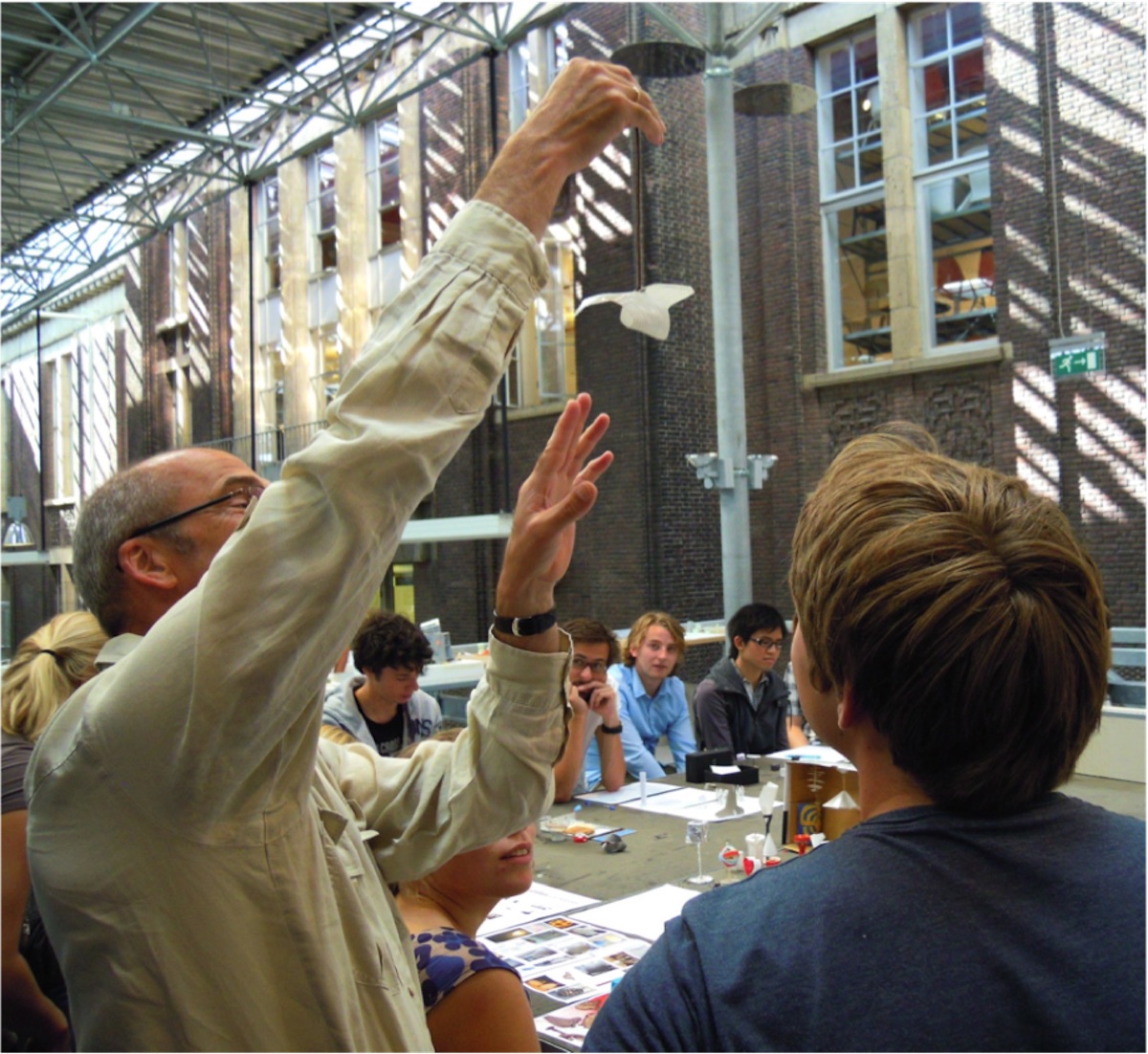5.2.1 Reading models
Course subject(s)
Module 5 – Scale and Detail
The course name, Models in Architecture, does not only refer to model-making. As the design process is often iterative, you will need to step back and reflect on your models and from this draw conclusions. In the picture below, you see Peter Koorstra, a fellow colleague at the Form and Modelling department at TU Delft, enthusiastically demonstrating to students that it is important to ‘read your model’. He shows that the object someone has created can be interpreted in several ways and that these different interpretations can be used in the next steps of your design process.
‘Reading’ your model does not mean seeing what you already have thought. Rather, it is a process of being surprised about what the model could be or could become. Some designers describe this as ‘a dialogue’ with their sketches and sketch models. The objects and drawings seem to ‘talk back’ and sometimes they can even tell you what your next step should be. The same works with a guiding theme. If you are able to fully explore your chosen theme, the theme can truly ‘guide’ you, and help you to become increasingly inspired.
This should not be seen as a mystification of the design process. Ultimately you are in control of the process and you shouldn’t become overwhelmed by the observations you can make through ‘reading’ your work as if this will automatically lead you to solutions. The objects, sketches and themes are just expressions of your own mind and they serve as reminders to keep you focused on your own thought process.


Models in Architecture by TU Delft OpenCourseWare is licensed under a Creative Commons Attribution-NonCommercial-ShareAlike 4.0 International License.
Based on a work at https://ocw.tudelft.nl/courses/models-architecture-design-physical-digital-models/.



